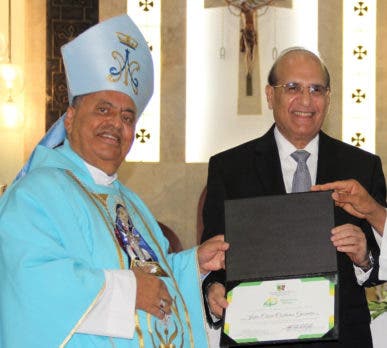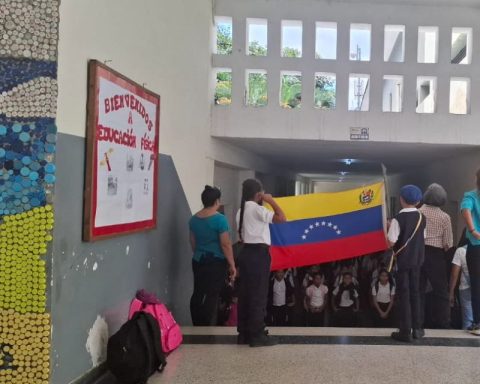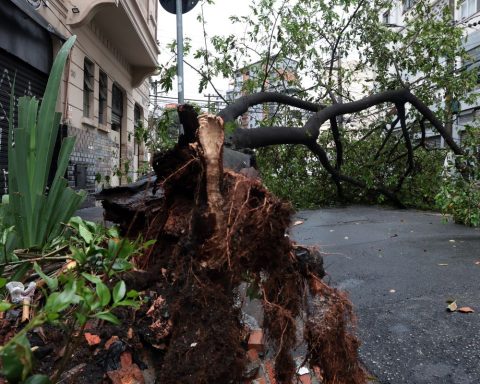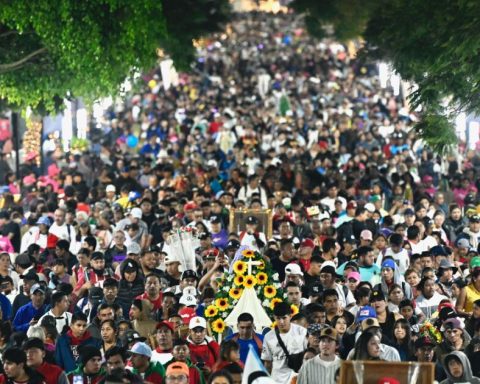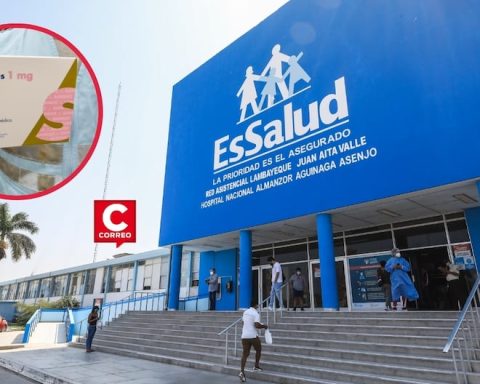The toast with beers in the square that ends with the can in the container… or outside of it. The box of the new cell phone that ends at the end of the day in the garbage can. The diaper wrapper that ends up almost buried under the sand of a dune. The law says that its manufacturers or importers are responsible for the gondola until the end, but in fact, many times it is a cleaning truck or a crew from the Municipality that lifts them.
“We are going to send a project to the Departmental Board to generate a new income that companies that are large waste generators must pay for,” announced Mayor Carolina Cosse at the Stockholm club on May 6, to the cheers of militants. Seven months after that act, after the round trip with the industries and the opening of a public consultationthe communal chief signed the draft decree that will transfer the cost of waste management to the generating companies.
In the text you accessed The Observer, the commune details that some 340,000 tons of garbage arrive each year at the Felipe Cardoso plant, of which about 40% have the potential to be recycled, and among them “a significant amount is container and packaging waste.” The document recalls that the current four classification plants of the Chamber of Industries in Montevideo do not recover more than a thousand tons per year, a “small percentage” of the total that circulates in the market.
The Cosse administration understands that All the operations – including that of Felipe Cardoso – entail “additional expenses” that are financed by “all taxpayers” when the “responsibility” should lie with manufacturers and importers. “We want to charge whoever corresponds to a task that the mayor’s office is doing today,” he declared to The Observer the director of Environmental Development, Guillermo Moncecchi.
The equation
Collecting each ton of garbage that comes out of the containers costs around US$73, according to calculations in the mayor’s office. If it is multiplied by everything Felipe Cardoso receives from houses in a year, it is almost US$25 million. It is even more expensive to pick up the little waste that is set aside for recycling: a little more than half a dollar per kilo, due to the special logistics required.
The mayor’s office establishes in the draft decree the creation of a “consideration income”, proposes leaving aside micro and small companies, and points from medium-sized ones upwards, whose products end up in the household garbage, or -in their default – lying around. The packaging and containers associated with commercial, industrial or agricultural use are left out.
Diego Battiste
Containers collected in the classification plants
The draft decree creates an annual payment for these companies that manufacture or import containers that are discarded once consumed.. This tax is equivalent to the cost per tonne of waste management incurred by the municipality, multiplied by the total tons that end up being stripped. This implies that the percentage of what they manage to recover for recycling or reuse is subtracted from all the material that companies dump on the market today.
This is a sensitive issue for the Chamber of Industries, which had already raised a cry in the sky months ago. The then president of the union, Alfredo Antía, maintained that the tax would overlap with the “enormous effort” of the affiliates to invest in a new packaging management plan, and that it was “very difficult to think that this would not have an impact on the prices”.
The so-called VALE plan implies extending container management to the entire country -until now it was only in six departments-, with more classification plants, an investment eight times greater and with the refund deposit as one of its main innovations, a mechanism in which the Minister of the Environment, Adrián Peña, has also insisted.
“We didn’t expect this (because of the rate) to come now,” he told The Observer one of those in charge of the initiative, Agustín Tassani. “We have planned investments throughout the country with the VALE plan and reaching agreements with all municipalities to achieve the objectives. We want to substantially increase the collection of containers and it is the same as what they want in the Municipality of Montevideo, we are aligned,” he said.
Tassani is optimistic that they will “agree to achieve the objectives hand in hand with the VALE plan and not with the project that the mayor is sending to the Board”“it is neither more nor less than aligning”, he advanced.
Moncecchi, the chief in charge of the administration, introduces a nuance: “We have clearly said that they are like two related concepts that go in parallel. The VALE plan is a proposal that they recover the containers through their mechanisms. With what they withdraw from there, it will be less what they will have to pay. We have been very clear in saying that we are not going to charge them twice, what they withdraw will be deducted “, he insisted and recalled the equation proposed in the project.
Asked if the new rate can have an impact on prices, the director of Environmental Development settled: “Today the cost is somewhere; or it is covered by the generator of the waste or it is being covered by the taxpayer. How the generator transfers those costs is a matter for them. It shouldn’t be too big of an impact.but we do not know their equations”.
The mayor’s project requires private individuals to submit an affidavit with the weight of containers and packaging inserted in the market the previous year and how much of it was recovered after being discarded in homes. “The determination of the amount that must be paid in each case will be made by the IM based on the information provided,” advances the text, which establishes fines of more than 250 readjustable units for not entering the register of waste generators, or submit false data.












